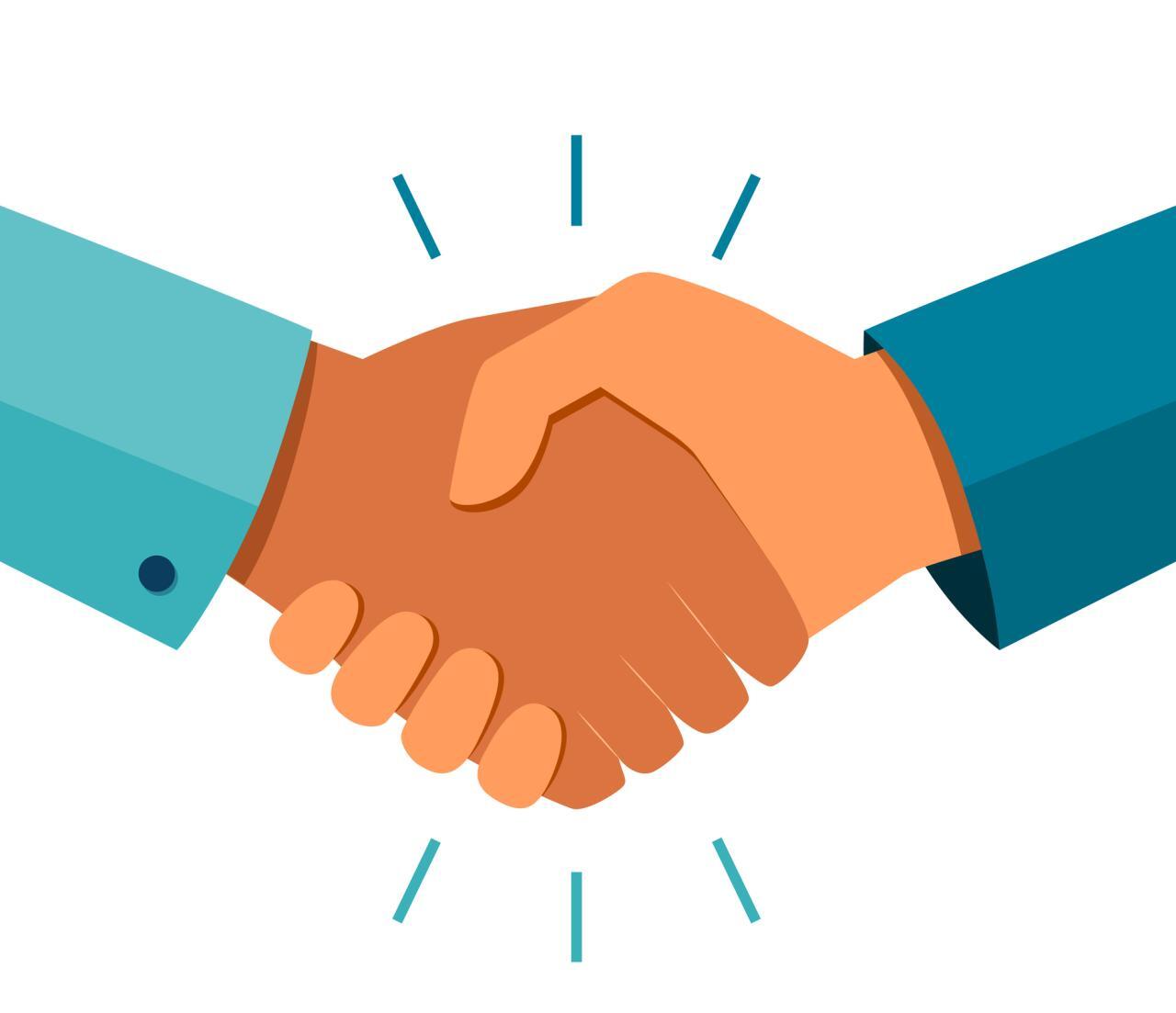Dealing with itchiness and distractions can significantly impact daily life, hindering productivity and overall well-being. This comprehensive guide explores the multifaceted nature of these challenges, delving into the underlying causes, effective management strategies, and supportive resources. From understanding the physiological mechanisms to implementing practical techniques, we aim to empower readers with actionable steps for reclaiming focus and comfort.
The guide will cover a range of topics, including the various causes of itchiness, from skin conditions to allergies, and different types of distractions, from environmental to internal. We will also explore effective strategies for managing both itchiness and distractions simultaneously, including home remedies, professional treatments, time management techniques, and creating a supportive environment. Furthermore, this guide provides resources, including tools, apps, and self-care tips, to enhance your journey towards a more focused and comfortable life.
Understanding Itchiness and Distractions

Itchiness and distractions are common experiences that can significantly impact our daily lives. Understanding their underlying causes and the mechanisms by which they affect focus and concentration is crucial for developing effective coping strategies. This section delves into the multifaceted nature of these experiences, exploring their various origins and the impact they have on our cognitive processes.Various factors contribute to the sensation of itchiness.
These factors range from relatively benign skin irritations to more complex underlying medical conditions. Distractions, similarly, can stem from internal mental states to external environmental factors.
Causes of Itchiness
Itchiness, or pruritus, can manifest due to a range of reasons. A crucial distinction lies in identifying the source of the itch, which can often point to appropriate interventions.
- Skin Conditions: A wide array of skin conditions can induce itchiness. Examples include eczema, psoriasis, and dermatitis. These conditions often involve inflammation and irritation of the skin, leading to the sensation of itch. The severity of itchiness can vary greatly depending on the specific condition and its progression.
- Allergies: Allergic reactions can trigger intense itchiness. Exposure to allergens like pollen, certain foods, or chemicals can provoke an inflammatory response in the skin, resulting in the sensation of itch. Identifying and avoiding allergens can often alleviate the itch.
- Other Potential Factors: Other factors can contribute to itchiness, including insect bites, infections, and certain medications. Dry skin, particularly in cold or dry climates, can also cause itchiness. Underlying medical conditions, such as kidney or liver disease, can also manifest as itchiness.
Types of Distractions
Distractions can originate from various sources and have different impacts on our ability to concentrate. Recognizing the source and type of distraction can aid in implementing effective countermeasures.
- Internal Distractions: Internal distractions arise from mental states such as anxiety, stress, or intrusive thoughts. These internal factors can significantly impact focus and concentration, often hindering productivity. For instance, persistent worries about upcoming deadlines can be a significant source of internal distraction.
- External Distractions: External distractions originate from the environment surrounding us. These can include loud noises, disruptive conversations, or visual stimuli. Examples include the incessant ringing of a phone or the constant notifications on a computer screen.
- Environmental Distractions: Environmental factors can also act as distractions. These encompass a range of conditions, including extreme temperatures, inadequate lighting, or uncomfortable seating arrangements. For example, a stuffy or overly hot room can be a significant environmental distraction.
Comparison of Itch Triggers and Distraction Sources
The following table illustrates potential interactions between itch triggers and distraction sources.
| Trigger/Source | Description | Potential Interaction |
|---|---|---|
| Skin Conditions (e.g., eczema) | Inflammation and irritation of the skin | Itchiness can be distracting, requiring constant scratching and disrupting focus. |
| Allergic Reactions | Immune response to allergens | Itchiness from allergies can disrupt concentration, particularly in severe cases. |
| Internal Distractions (e.g., anxiety) | Mental states like worry | Anxiety can exacerbate itchiness, creating a vicious cycle of distraction and discomfort. |
| External Distractions (e.g., loud noises) | Environmental disruptions | Loud noises can interfere with concentration, making it harder to focus on tasks that require sustained attention. |
| Environmental Distractions (e.g., uncomfortable temperature) | Unfavorable environmental conditions | Uncomfortable temperatures can lead to discomfort, which may hinder focus. |
Physiological Mechanisms
The physiological mechanisms behind how itchiness and distractions affect focus and concentration are complex.
- Itchiness: The sensation of itchiness is mediated by specific neural pathways in the brain. Itch signals, triggered by various stimuli, can disrupt neural activity associated with higher-level cognitive functions, including attention and focus. This disruption can lead to difficulty maintaining concentration. Scratching, as a common response to itchiness, further adds to the distraction.
- Distractions: Distractions, whether internal or external, activate different neural pathways in the brain. These pathways can compete with neural activity associated with task performance, diverting cognitive resources and reducing the capacity for sustained focus. The brain’s attempt to process and respond to distractions can lead to a significant reduction in concentration.
Managing Itchiness
Itchiness, or pruritus, is a common discomfort affecting people of all ages. Understanding the underlying causes is crucial for effective management. This section delves into various methods for alleviating itchiness, from simple home remedies to more advanced medical interventions. It also highlights the importance of identifying root causes and implementing lifestyle adjustments to reduce the frequency and intensity of this irritating sensation.Effective management of itchiness necessitates a multifaceted approach.
Addressing the root cause is paramount, alongside implementing appropriate treatments and lifestyle modifications. The following sections provide a comprehensive overview of strategies for alleviating and managing pruritus.
Methods for Alleviating Itchiness
Various methods can be employed to alleviate itchiness, ranging from simple home remedies to professional medical treatments. Choosing the right approach depends on the underlying cause and the severity of the condition.
- Home Remedies: Simple home remedies often provide initial relief for mild itchiness. These include applying cool compresses, using oatmeal baths, or applying a thin layer of plain petroleum jelly to the affected area. These methods can help soothe the skin and reduce inflammation.
- Topical Treatments: A wide array of topical treatments, including creams, ointments, and lotions, are available to address various skin conditions. These treatments often contain anti-inflammatory or antihistamine ingredients, which help reduce itching and inflammation. Examples include hydrocortisone cream for mild to moderate inflammation, calamine lotion for general itch relief, and menthol-based creams for a cooling sensation.
- Oral Medications: In cases of more persistent or severe itchiness, oral medications may be necessary. Antihistamines, such as diphenhydramine (Benadryl), can help reduce the body’s allergic response, thereby lessening itching. Other oral medications, like those containing corticosteroids, may be prescribed by a doctor for more significant inflammation.
- Professional Medical Treatments: For severe or chronic itchiness, professional medical treatments may be required. These treatments may include light therapy, phototherapy, or in more severe cases, immunosuppressant medications. This approach is typically recommended when other methods have failed to alleviate the symptoms.
Identifying and Eliminating Root Causes
Pinpointing the root cause of itchiness is essential for effective long-term management. This often involves a thorough assessment by a dermatologist or other healthcare professional.
- Skin Conditions: Various skin conditions, such as eczema, psoriasis, and hives, can cause intense itching. Identifying the specific skin condition allows for targeted treatment and management of symptoms.
- Allergies: Allergic reactions to certain substances, such as detergents, fabrics, or environmental factors, can trigger itching. Identifying and avoiding these allergens is crucial for preventing further episodes.
- Dry Skin: Dry skin can lead to significant itching. Maintaining proper skin hydration through moisturizing creams and avoiding harsh soaps can significantly reduce this discomfort.
- Medical Conditions: Some underlying medical conditions, including kidney disease or liver disease, can manifest as itching. A medical professional should be consulted to rule out such possibilities.
Lifestyle Changes for Reduced Itchiness
Lifestyle adjustments can significantly impact the frequency and intensity of itchiness. These modifications should be tailored to individual needs and preferences.
- Diet: Certain foods and beverages can exacerbate itchiness. A balanced diet that minimizes potential allergens or irritants can help reduce the discomfort. A diet rich in fruits, vegetables, and whole grains, and low in processed foods and sugary drinks is often recommended.
- Stress Management: Stress can worsen various health conditions, including itchiness. Implementing stress-reducing techniques, such as yoga, meditation, or spending time in nature, can positively impact the body’s overall well-being.
- Hygiene Practices: Maintaining good hygiene, such as using gentle cleansers and avoiding overly hot showers or baths, is essential for preventing skin irritation and itchiness. Using fragrance-free products can also minimize allergic reactions.
Addressing Distractions

Effective management of itchiness and distractions is crucial for maintaining focus and productivity. Understanding the sources and nature of distractions is the first step in developing strategies to mitigate their impact. This section delves into techniques for minimizing distractions from various sources and managing internal conflicts that hinder concentration.Addressing distractions is an ongoing process requiring adaptability and refinement.
Strategies for minimizing external and internal distractions, combined with effective time management techniques, empower individuals to maximize their focus and productivity.
Minimizing External Distractions
Various environmental, social, and technological factors can disrupt concentration. Recognizing these sources of distraction is vital for developing targeted strategies.
- Environmental Distractions: Noise, excessive light, and uncomfortable temperatures are common environmental distractions. Adjusting the environment to create a more conducive atmosphere is essential. This might involve using noise-canceling headphones, dimming lights, or regulating the temperature to a comfortable level. For example, working in a quiet library or a dedicated home office can significantly reduce environmental disruptions.
- Social Distractions: Interruptions from colleagues, family members, or other individuals can disrupt concentration. Establishing clear boundaries and communication protocols can minimize social distractions. For instance, scheduling specific times for interactions or utilizing tools like project management software to manage communication channels can effectively reduce interruptions.
- Technological Distractions: Constant notifications from phones, emails, and social media platforms can be highly disruptive. Strategies for managing these include turning off notifications, using website blockers, or designating specific times for checking these platforms. Examples include using focus mode on devices, scheduling dedicated periods for checking email, and avoiding social media during work hours.
Managing Internal Distractions
Internal distractions, such as racing thoughts or anxieties, can be equally challenging to overcome. Developing techniques to manage these inner conflicts is vital for sustained focus.
- Racing Thoughts: Techniques like mindfulness meditation or deep breathing exercises can help calm racing thoughts. These practices encourage a shift in focus from anxious thoughts to present-moment awareness, thus reducing their disruptive impact.
- Anxieties: Identifying the triggers for anxiety and developing coping mechanisms, such as journaling or engaging in physical activity, can help manage anxieties. Recognizing and addressing underlying anxieties is crucial for maintaining concentration.
Effective Time Management Techniques
Efficient time management plays a critical role in maximizing productivity and minimizing distractions. Strategies for effective time management can dramatically improve focus.
- Prioritization: Prioritizing tasks based on urgency and importance is essential for focusing on high-impact activities. This minimizes the mental clutter of multiple tasks and allows for focused effort on high-priority items. For example, using the Eisenhower Matrix can effectively prioritize tasks based on urgency and importance.
- Time Blocking: Allocating specific time slots for different tasks helps maintain focus and prevents task-switching. This structured approach reduces mental fatigue and allows for sustained concentration on each task. This approach can be implemented using digital calendars or physical planners.
- Pomodoro Technique: Working in focused intervals (e.g., 25 minutes) with short breaks can maintain concentration and prevent burnout. This technique is effective in managing distractions and sustaining focus during prolonged work periods.
Concentration-Enhancing Tools and Techniques
Various tools and techniques can enhance concentration and reduce distractions. Understanding the benefits and drawbacks of different approaches is key.
| Tool/Technique | Benefits | Drawbacks |
|---|---|---|
| Mindfulness Meditation | Reduces stress, improves focus, increases self-awareness | Requires practice and discipline; may not be suitable for everyone |
| Noise-Canceling Headphones | Reduces environmental distractions | Can be expensive; may not be suitable for all work environments |
| Website Blockers | Reduces technological distractions | May limit access to necessary resources; can feel restrictive |
| Time Management Apps | Helps structure time, set reminders, and track progress | Requires learning the software and potential reliance on technology |
Strategies for Combating Both Itchiness and Distractions
Effective management of both itchiness and distractions requires a multifaceted approach. Simultaneously addressing these issues necessitates a structured plan encompassing environmental modifications, routine adjustments, and proactive strategies for symptom relief. This involves creating an environment that minimizes disruptions while promoting comfort and allowing for focused attention.Addressing both itchiness and distractions simultaneously is achievable through careful planning and implementation of specific strategies.
The key lies in recognizing the interconnectedness of these factors and tailoring solutions that cater to both. By creating a supportive environment and establishing a consistent routine, one can effectively manage these challenges.
Creating a Distraction-Free Environment
Minimizing distractions is crucial for focus and concentration. This involves controlling the surrounding environment, both physically and mentally. A dedicated workspace, free from interruptions and visual clutter, is highly beneficial. Sound levels also play a significant role. Using noise-canceling headphones or white noise machines can create a calming atmosphere and minimize distractions from external sounds.
Moreover, maintaining a clean and organized workspace can contribute to a more focused and productive atmosphere. This includes keeping unnecessary items off the desk or work area, as well as arranging materials in an aesthetically pleasing and functional manner.
Adapting Daily Routines
Daily routines play a vital role in managing both itchiness and distractions. A structured schedule can establish predictable patterns, allowing for consistent itch relief and minimizing distractions. Incorporating short breaks into the routine can aid in managing both issues. These breaks can involve activities such as stretching, deep breathing exercises, or engaging in light physical activity to reduce itchiness and alleviate mental fatigue.
- Scheduling Itch Relief Treatments: Incorporating specific times for applying topical treatments or taking medications into the daily schedule can significantly improve itch management. This ensures consistent treatment, reducing the likelihood of flare-ups and associated discomfort. For instance, a morning application of a prescribed cream for eczema can be scheduled to occur before work or school. Evening application can be part of a nightly routine before bedtime.
- Time-Blocking for Focus: Dedicated time blocks for focused work or study can significantly reduce distractions. This includes setting aside specific time slots for completing tasks and allocating the same time for specific itch management activities, like applying topical cream or taking medication. The predictability helps maintain focus and manage itchiness effectively. An example would be setting aside two hours for focused work, followed by a 15-minute break to address itchiness and refocus.
Establishing a Consistent Routine
A consistent routine provides a sense of predictability and structure, which is essential for managing both itchiness and distractions. This routine should include specific times for activities, meals, and treatments. This predictability can significantly reduce stress and anxiety, both of which can exacerbate itchiness and make it harder to concentrate. Consistency also helps regulate the body’s natural rhythms, making it easier to manage symptoms.
- Importance of Regularity: Maintaining a regular sleep schedule is crucial for overall well-being. Consistent sleep patterns help regulate the body’s natural processes, reducing stress and improving the body’s ability to manage itchiness and distractions. This includes going to bed and waking up at roughly the same time each day, even on weekends.
- Impact on Mood and Focus: A consistent routine can have a positive impact on mood and focus. A predictable schedule reduces stress, making it easier to manage itchiness and distractions. This predictability fosters a sense of control, which can positively impact mental well-being. For example, a structured daily routine that includes exercise, meals, and designated work/study periods can help regulate mood and enhance focus.
Specific Scenarios and Examples
Applying strategies for managing itchiness and distractions requires tailoring them to specific situations and individual needs. This section will explore real-life examples across various settings, highlighting how different approaches can be effective for various age groups and circumstances. Understanding the severity of the itch and the nature of the distraction is crucial for developing appropriate countermeasures.Effective management involves a flexible approach, recognizing that what works for one person or situation may not be ideal for another.
This section demonstrates how strategies can be adapted to address the unique challenges encountered in everyday life.
Working from Home
Strategies for managing itchiness and distractions while working from home are particularly relevant. Maintaining focus and productivity requires mindful techniques.
- Dedicated Workspace: Establishing a designated workspace helps create a clear separation between work and relaxation. This physical distinction aids concentration. Minimizing distractions by keeping the workspace organized and free of unnecessary items can enhance focus.
- Distraction-Free Time Blocks: Schedule specific periods for work tasks and stick to the schedule. Short, focused work sessions with planned breaks can improve concentration and minimize distractions. Employing time management techniques, such as the Pomodoro Technique, can enhance productivity and reduce feelings of being overwhelmed.
- Noise-Cancelling Headphones: Using noise-canceling headphones can help to block out distracting sounds, allowing for uninterrupted work sessions. This is especially helpful for individuals with heightened sensitivities to external noise.
- Mindfulness Techniques: Incorporating mindfulness exercises, such as deep breathing or meditation, can aid in managing both physical and mental distractions. Regular mindfulness practice can help develop focus and reduce the impact of itchiness or other distractions.
Studying
Managing distractions and itchiness during study sessions is crucial for effective learning. A structured approach can significantly improve focus and comprehension.
- Study Environment: Choosing a quiet and organized study space minimizes interruptions. Eliminating clutter and unnecessary stimuli can promote concentration. Natural light and proper ventilation can also contribute to a more conducive learning environment.
- Active Recall: Utilizing active recall techniques, such as flashcards or practice quizzes, can improve retention and reduce the need for repeated study sessions. Active recall strategies are particularly effective for engaging the memory and promoting focus.
- Regular Breaks: Scheduling short breaks throughout study sessions can help maintain concentration and reduce the impact of itchiness. These breaks can involve physical activity or relaxation techniques, which can enhance cognitive function and reduce stress.
- Distraction-Free Zones: Identifying and avoiding potential distractions during study time is crucial. This might involve turning off notifications, putting away mobile devices, or temporarily stepping away from a distracting environment.
Socializing
Managing itchiness and distractions during social interactions is important for maintaining positive relationships. Effective strategies promote engagement and connection.
- Mindful Listening: Actively listening to others and engaging in meaningful conversation can help to reduce the impact of internal distractions. Focusing on the speaker and their message minimizes the tendency to become distracted by personal sensations.
- Managing Physical Discomfort: If itchiness is a concern during social situations, having a discreet method for managing it, such as a small, portable item for scratching or a soothing cream, can help to maintain engagement without disrupting the interaction.
- Identifying Triggers: Understanding potential triggers for itchiness or distraction can help to anticipate and manage them proactively. Identifying factors that cause these issues in social settings allows for better preparedness and management.
- Establishing Boundaries: Setting boundaries for interactions can help individuals to maintain focus and manage distractions effectively. Knowing when to disengage from a conversation or situation can be essential for preventing the disruption of the social setting.
Potential Interactions and Considerations

Understanding the interplay between itchiness treatments and distraction management strategies is crucial for effective coping mechanisms. These methods can sometimes influence one another, potentially amplifying or diminishing the impact of each approach. This section will explore these interactions and emphasize the significance of professional guidance in managing itchiness effectively.Effective itchiness management often requires a holistic approach, considering potential interactions between various treatment options and strategies for managing distractions.
This careful consideration is vital for optimizing outcomes and minimizing potential adverse effects.
Potential Interactions Between Treatments
Effective itchiness management often involves a combination of treatments. Understanding potential interactions between these treatments is essential for avoiding negative consequences. For example, certain topical creams may have a synergistic effect with specific distraction techniques, while others might reduce the effectiveness of either treatment approach.
- Some topical medications, particularly those containing corticosteroids, can lead to skin thinning and increased sensitivity, potentially exacerbating itchiness if not carefully monitored.
- Oral antihistamines, while commonly used for itch relief, can sometimes cause drowsiness, impacting concentration and potentially increasing susceptibility to distractions.
- Certain over-the-counter pain relievers, while helpful for managing symptoms associated with itchiness, may also have a mild sedative effect, potentially interfering with focus and concentration.
Importance of Consulting Healthcare Professionals
Healthcare professionals possess the expertise to evaluate individual needs and tailor treatment plans accordingly. They can identify potential interactions between different treatments and recommend strategies to minimize these risks. Consulting a healthcare professional is crucial for determining the underlying cause of the itchiness and developing a safe and effective treatment plan.
- A healthcare professional can assess the severity and root cause of itchiness, ensuring appropriate and safe treatment options are prescribed.
- They can accurately diagnose potential underlying medical conditions contributing to itchiness, such as allergies, skin conditions, or other systemic issues.
- Professional guidance is particularly important when considering long-term treatments, as these may have more complex interactions and require ongoing monitoring.
Impact of Medications on Itchiness and Concentration
Certain medications can impact both itchiness and concentration. Understanding these potential effects is essential for effective management. For example, some medications can exacerbate existing itchiness or induce new symptoms, while others might affect cognitive function, impacting focus and concentration.
- Some medications, particularly those used to treat chronic conditions like high blood pressure or depression, may have side effects that contribute to itchiness. Examples include certain diuretics, which can alter fluid balance, and certain antidepressants, which can impact neurotransmitter function.
- Medications that affect the nervous system can influence both concentration and itch perception. For example, certain anti-anxiety medications can cause drowsiness or dizziness, which can make it difficult to focus. These effects can vary significantly between individuals, making careful monitoring crucial.
Situations Requiring Professional Help
Seeking professional help is crucial in specific situations where itchiness and distractions become significant impediments to daily life. Prompt intervention can prevent the condition from worsening and help restore a healthier lifestyle.
- Chronic or severe itchiness that significantly impacts sleep, daily activities, and overall well-being requires immediate professional attention.
- If itchiness is accompanied by other symptoms such as fever, swelling, or skin lesions, professional evaluation is essential to rule out potential infections or other underlying conditions.
- Persistent distractions that interfere with work, school, or personal relationships, coupled with unexplained itchiness, necessitate professional assessment to rule out potential underlying medical conditions.
Epilogue

In conclusion, effectively managing itchiness and distractions requires a multifaceted approach, encompassing understanding the root causes, implementing targeted strategies, and creating a supportive environment. By combining practical techniques with self-care practices, individuals can reclaim their focus and well-being. This guide has presented a comprehensive overview of the subject, offering a range of resources and techniques to navigate the challenges of itchiness and distractions, ultimately promoting a more productive and comfortable life.